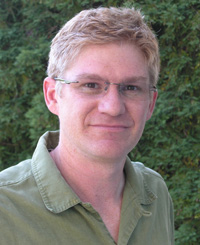At a recentmeeting of the California Ocean Protection Council (OPC), a panel of researchers and managers briefedthe council on the Summer 2015West Coast harmful algal bloom (HAB) event and other troubling changing ocean conditions. The presentation highlighted the value of past and current NCCOS competitive HAB programs. These program investments in modeling, monitoring, observing and response capabilities in the region have positioned NCCOS partners to help describe changing ocean conditions and predict future impacts on critical fisheries resources.

El Niño and a ‘blob’ of warm water provided optimal conditions for a persistent HAB, causing marine mammal deaths, a Dungeness crab fishery failure declaration request, and impacts to other marine resources such as California spiny lobster, many species ofgroundfish, anchovy, sardine, and mackerel. The HAB consisted mostlyof a phytoplankton called Pseudo-nitzschiathatproduces a toxin called domoic acid (DA) which poisons marine mammals and birds and causes Amnesic Shellfish Poisoning in humans.

The four panelists, including NCCOS partners Dr. Raphael Kudela, University of California Santa Cruz and Gregg Langlois, California Department of Public Health, focused on the extraordinary nature of the event and the importance of the long-standing collaborations between researchers, state agencies, and industry to protect public health and minimize HAB impacts. Also discussed were the likelihood of similar or expanded El Niño future events and decide how to improve future response. Dr. Kudela discussed anomalies such as the blob,warming ocean conditions, and their impact on HABs. He also discussed a model developed by NCCOS ECOHAB and OPC to improve ‘hotspot’ HAB predictions, link similar predictions in Washington and Oregon, and utilize predictions to inform fisheries management decisions for HAB-impacted species such Dungeness and rock crab.

The OPC members had questions on causes and future blooms. Dr. Kudela responded based on prior and current findings and outcomes from NCCOS ECOHAB and MERHAB research projects. Dr. Kudela predicts increasing near future HAB events, expansion of species and toxins of concern, and continued negative impacts to California’s living marine resources.
See a video of Dr. Kudela’s introduction, presentation plus follow-up questions by council members on CAL-SPAN-ORG beginning at time 45:45. The HAB presentation was also made to the California State Senate Joint Committee on Fisheries and Aquaculture at the February 11, 2016 43rd Annual Zeke Grader Fisheries Forum providing more outreach and media coverage of the West Coast Pseudo-nitzschia HAB issue.
For more information, contact Quay.Dortch@noaa.gov and Marc.Suddleson@noaa.gov.
